The visual effects supervisor was practically a one-man operation as he joined director Gareth Edwards and crew in Thailand and the United Kingdom.
By Lucas O. Seastrom
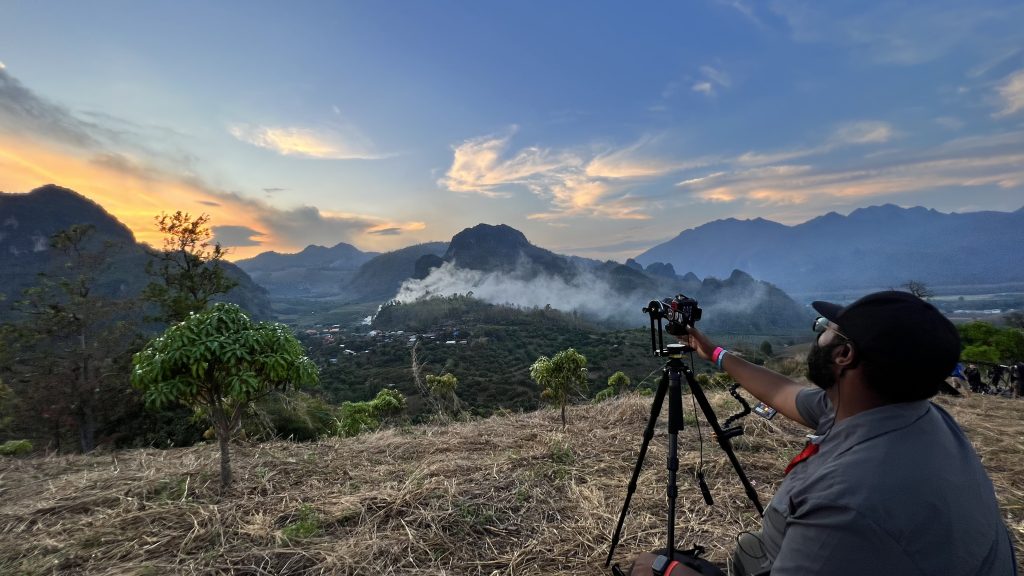
Industrial Light & Magic visual effects supervisor Andrew Roberts was already a fan of writer/director Gareth Edwards when the opportunity to work on The Creator came knocking. In 2022, Roberts would join the crew on location in Thailand as ILM’s onset visual effects supervisor. Edwards had organized a streamlined team to work quickly and efficiently.
“Originally, Gareth explained that he was hoping for it to be a small team, maybe six vans driving around Thailand,” Roberts tells ILM.com. “His hope was that we’d see a location, jump out and film it. There might not be time to capture all of the typical reference material and photography that you normally would, but we’d get certain things before moving on to the next location. It was quite a guerrilla, lightweight, indie approach.”
Although The Creator did require more infrastructure than Edwards’ dream of a six-van guerrilla unit, the principle remained the same, and Roberts was the only visual effects representative onset. “There wasn’t the typical visual effects support where you have someone focusing on HDRIs, and a wrangler keeping track of the data, and a coordinator,” explains Roberts. “I would fulfill all of those responsibilities. For anything onset, I’d be there to advise and give recommendations to Gareth. But then at the same time, I was also trying to capture as much information as I could to provide a snapshot for the visual effects team. I recorded the lens, distance from the characters, lighting conditions and so forth.
“I spoke to [ILM chief creative officer] John Knoll before I went onset,” Roberts continues, “and he discussed his experiences on Rogue One [Edwards’ previous collaboration with ILM]. He said it would be lean, pretty indie-style, and you won’t get everything. So be prepared to accept that and trust that the team will be able to execute the shots and use whatever you can gather for them. That was reassuring, though obviously I agonized and wanted to get everything. But I had to let things go. My primary role was to be there for Gareth and make sure he had the support he needed.”
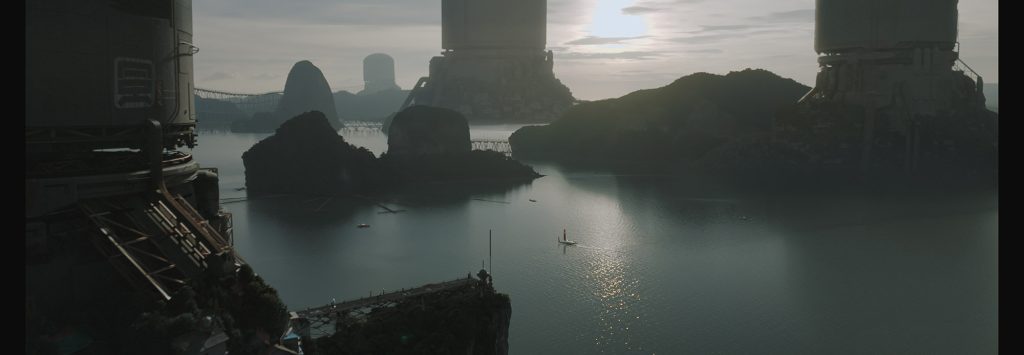
Admittedly, it was a lot to manage, but an assignment that kept Roberts constantly engaged with the director, cinematographers Greig Fraser and Oren Soffer, and other crew members from departments as varied as makeup and special effects. And his work continued with the end of each shooting day.
“Each night I’d transfer everything into a folder structure that listed the relevant information for each image,” Roberts says. “There were prop scans, weapons, environments, vehicles, locations, even just a plate behind an actor. It was all organized. So when I returned to L.A., I cleaned it up so that it could work inside ILM’s structure and enable people to easily find the information.” Using FilemakerPro for his information structure, Roberts had captured some six terabytes of reference single-handedly over the course of production, which wrapped around May of 2022.
Before starting on The Creator, Roberts had a long career in visual effects across film and television, including stints at Pixomondo, Scanline VFX, and Digital Dimension, among others. He joined ILM to work on Obi-Wan Kenobi (2022) as part of the ILM StageCraft virtual production team. He’d also done onset work for projects like Babylon (2022), Haunted Mansion (2023) and Killers of the Flower Moon (2023). It was during his work on Mansion that he began preparation for The Creator. “Knowing that I was going to be the only visual effects person onset, observing the Haunted Mansion team was really helpful,” Roberts says. “They were very efficient. I watched them, asked questions and took lots of notes. They were doing a lot of shooting in low light, which I knew would also be the case for The Creator. I was able to learn which settings worked well, particularly when capturing HDRI’s.”
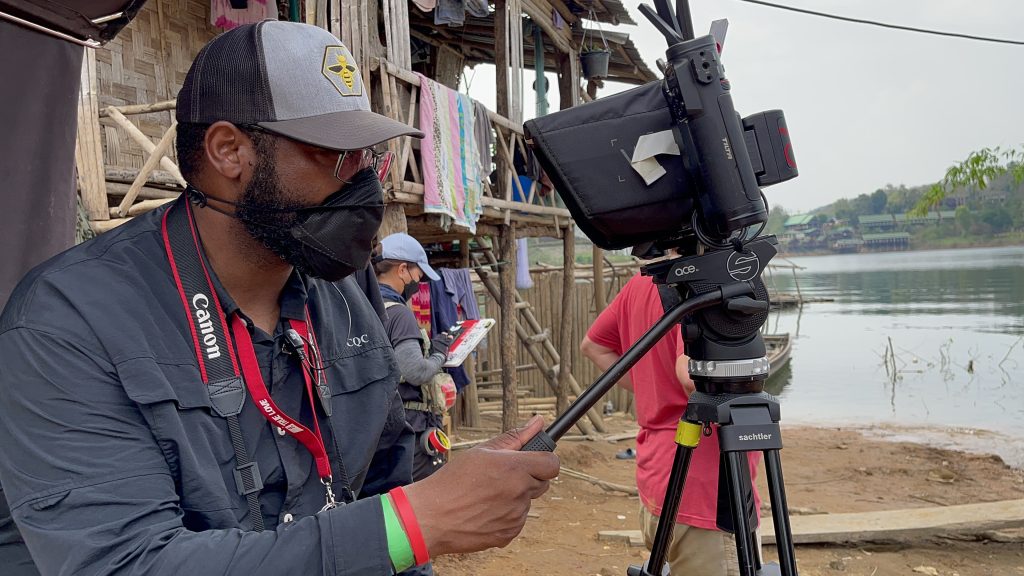
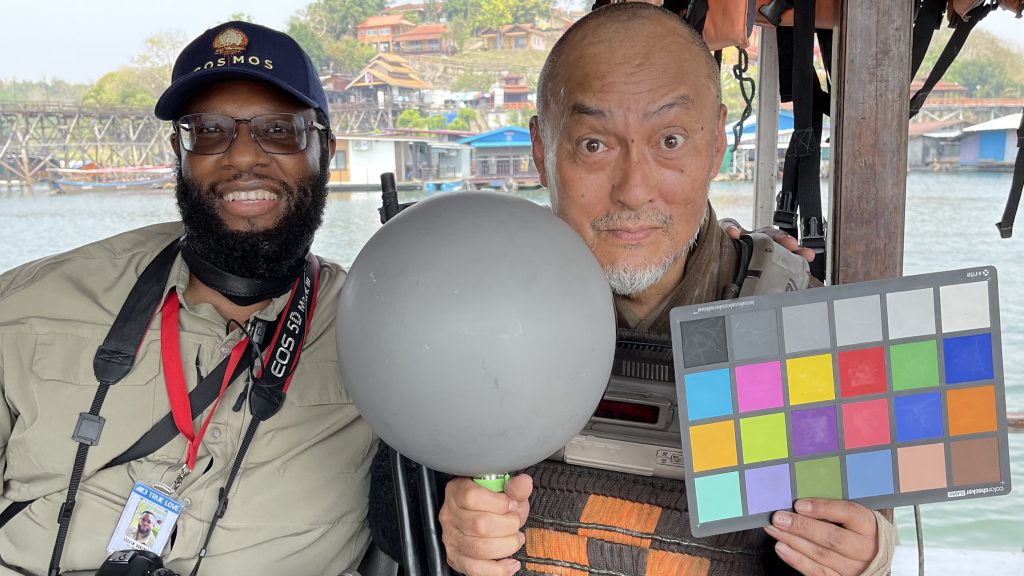
As was the case with the ILM crew in general, one of Roberts’ earliest concerns was how to tackle the full-body replacement of live actors with artificially-intelligent robots. “Integrating photoreal robots seemed to be the biggest challenge,” he explains. “There were storyboards, but Gareth didn’t want anyone to get pigeon-holed in following them. They were aspirational, a general sketch. We’d ultimately find the shot on the day. Actors would be fulfilling the roles of these robots, and they needed to be removed from the footage, and replaced with digital robots. In environments where there is a lot of smoke, that can be really difficult. The convincing integration of the robots was something I was talking to [visual effects supervisor] Jay Cooper about a lot.”
Production designer (and former ILM concept artist) James Clyne worked with Edwards throughout production to revise the look and mechanics of both the full-body A.I. robots and simulants. The latter – A.I. beings who appear human, save for a bundle of gadgetry at the back of their heads – were another key challenge for ILM, in particular for Roberts onset. “We only had a sketch of what the mechanics in the simulants’ heads would eventually look like,” he notes. “It was also described in the script, how it would reflect the character’s emotions. How to track where that geometry sat and ensure it was convincingly integrated was another thing we spent time thinking about how to achieve.”
Edwards was unwilling to let his actors be covered in elaborate tracking markers, especially in the case of Madeleine Yuna Voyles, a child actor who plays the central character, Alphie. “The makeup department assisted me with the placement of just a handful of subtle tracking dots,” Roberts explains. “We thought about creating a template so that the marks would be in the same position for everyone. But because the actors were different sizes, it was more about just observing the individual and placing the dots where it worked best for them. That was a daily process whenever there was a simulant on the call sheet.”
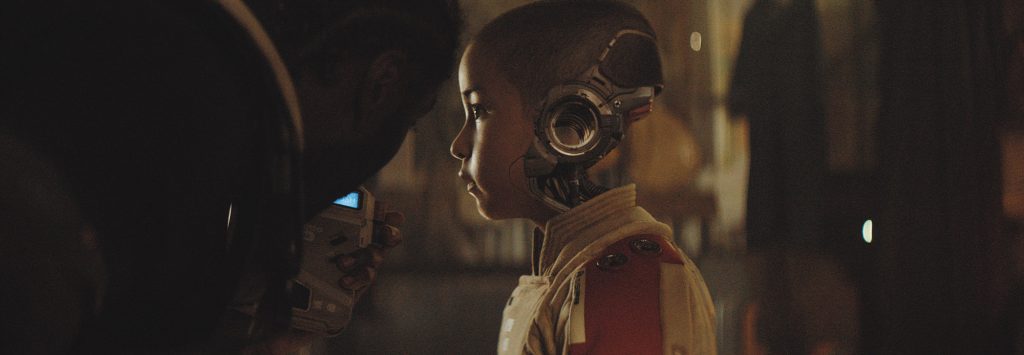
Of less concern were a number of traditional, hard-surface sci-fi elements including tanks, aerial vehicles, and environments which the ILM team would incorporate into plates captured on location. “That’s ILM’s bread and butter,” as Roberts says. “Based on James Clyne’s designs, we’d end up with beautiful shots.” Among these was an elaborate sequence when a large American tank attacks a village along with a mix of supporting vehicles and soldiers, including automated bombs programmed to run into the enemy fray and detonate.
“The tank battle was a situation where I was able to assist,” Roberts points out. “We had storyboards that described eight to ten-feet tall bomb robots. There was a stuntman, and we found a pole that was about five feet tall. We strapped it to his upper body so it was sticking out above his head, making him closer to ten feet. Gareth could frame for the larger character. We also added some tracking marks to the stuntman’s limbs in case we needed to track his movement. We didn’t know if the robot would be running like a person or a dog. The animation team ended up developing a great run.”
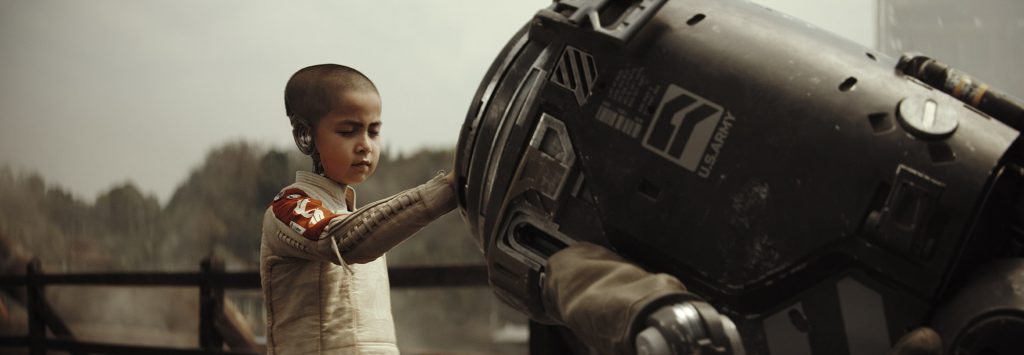
Throughout principal photography, Roberts covered a lot of ground, often more than the main crew, which itself typically shot at more than one location per day. “During a given day we’d be at the farmhouse, and then at night we’d move to the location where the soldiers raid the A.I. base,” he explains. “There were occasions like that when Gareth would finish, the crew would start preparing a company move, and it was my opportunity to do a scan, take measurements, but then I’d hear on the radio that Gareth needed me. So we’d go and talk about the next setup and what was needed. But I still needed all those measurements! I would catch a ride back to the previous location to finish gathering as much as I could, then rush back to where Gareth was shooting. There were some moments when it was triage – what’s the one thing I can get that the artist will need the most?”
Among Roberts’ favorite locations was an abandoned industrial plant used as a facility that destroys A.I. robots. “It was really grungy, with rusty steps,” he recalls. “It had so much history to it. There were holes in the ceiling and lots of dust, so shafts of light would come through.” Another was a mining quarry used as ground zero, the location of a nuclear blast back on American soil. Roberts describes a “huge place where you’d drive this spiral road down into a quarry. Big gray walls, very stark, almost alien. There was a physical set of a few destroyed cars, which ILM then extended. The Thai crew mentioned a number of times that they’d never been there before. Gareth was the first person to shoot in a number of those locations.”
At times, “some last-minute things would come up, and you learned to pivot and adjust,” as Roberts says. “This included some of the driving scenes, like when Allison Janney [Colonel Howell] and Marc Menchaca [McBride] are in the police van and they overhear on the radio the suspects they’re pursuing have been seen. For those types of scenes, we shot on a soundstage and used a poor man’s process. We had a 4K projector, put some screens up, and Gareth selected some stock driving footage for the specific locations. Oren realized that the running time on the plate was only two minutes, but Gareth needed it to run for ten. So I took that material, loaded it into Adobe After Effects, and set it to loop, blend, and dissolve at the best points. I connected my laptop to the projector, they angled the screen to sit outside the van window, and special effects had a little hose where they sprayed rain on the windows which helped with refraction and really sold those driving shots.”
Roberts points out that “Gareth is very scrappy and that’s the ILM ethos as well. We go with the flow and are there as a creative partner, whether it’s high-concept, high-tech, or just using duct tape and bamboo sticks. Whatever the filmmaker needs, we’re there.”
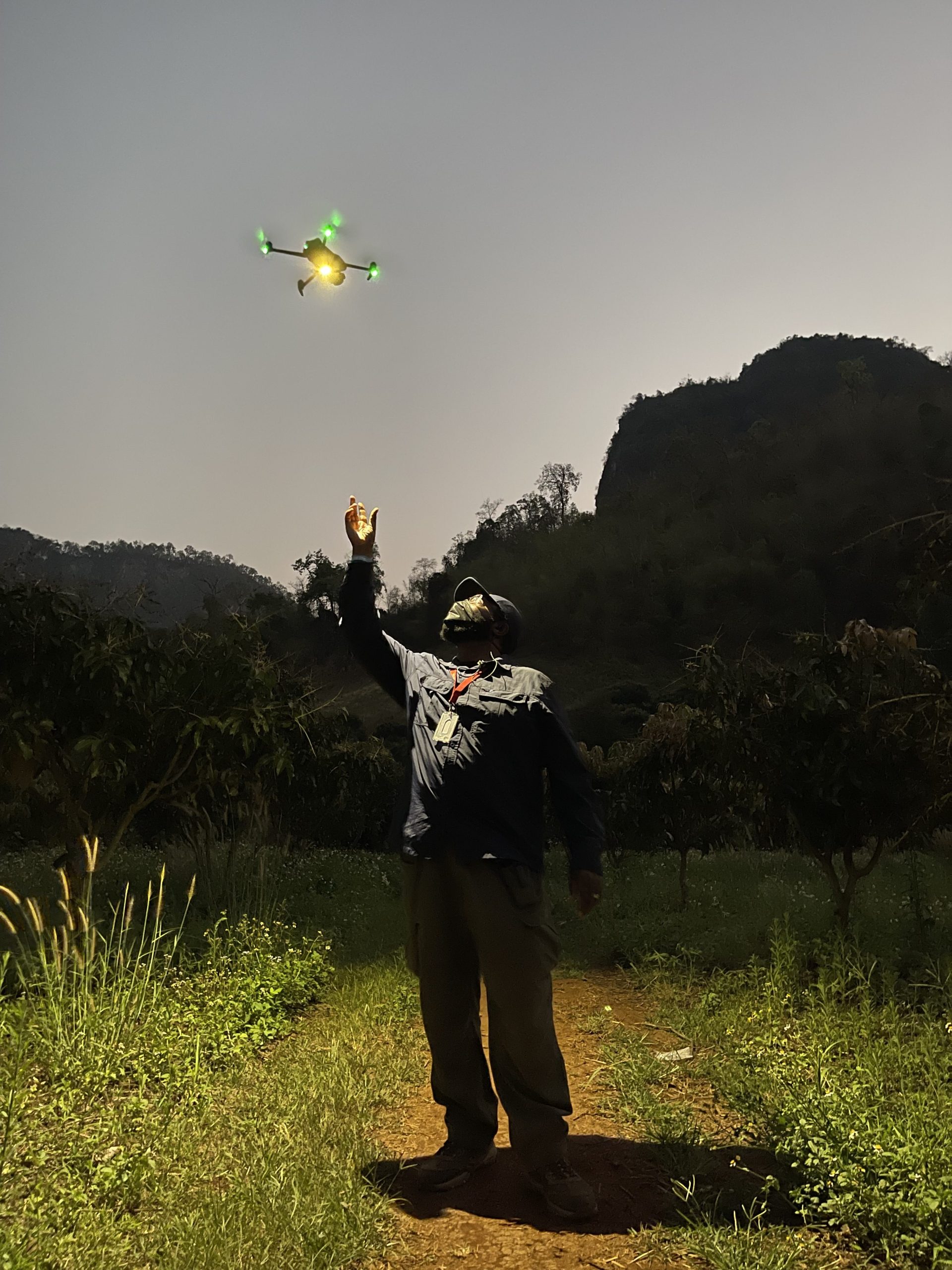
Near the end of the main shoot, cast and crew assembled at Pinewood Studios in Roberts’ native United Kingdom where they primarily shot on the ILM StageCraft virtual production volume for scenes aboard the suborbital craft, NOMAD. “Having worked on Obi-Wan Kenobi, getting back on the StageCraft stage was very refreshing and familiar,” Roberts says. “The environments were created in Helios, our real-time rendering system. The team works on measurements of the physical set and then do the layout and tracking to extend from the physical into the digital.
“For me, it was interesting to be on the client side this time,” Roberts continues. “For Obi-Wan, I was on the stage team. We’d get in early before the director, cast and crew. They’d bring their material in and we’d accommodate, making adjustments based on what the D.P. and director needed. Then they shoot for the day and leave. On The Creator, I was on that crew coming in. It was interesting seeing things from that perspective and observing what ILM provided, not only in terms of the technical and creative wizardry of the Stagecraft volume, but also in their meticulous planning and careful communication, ensuring every department had what they needed.”
Before they had completed work in Thailand and moved to England, Roberts had an opportunity to direct second unit work on The Creator, which he describes as “a blessing” and “something I did not anticipate. We were in Northern Thailand, at the location where Joshua’s getaway car broke down at the crossroads. While Gareth was shooting conversations, there were these beautiful hills in the background. He came to me and explained that he needed background footage for the jetcopters when they’re flying, taking off, and landing, and could I take the drone team and shoot that material? It was wonderful to see some of that material make it into the film.”
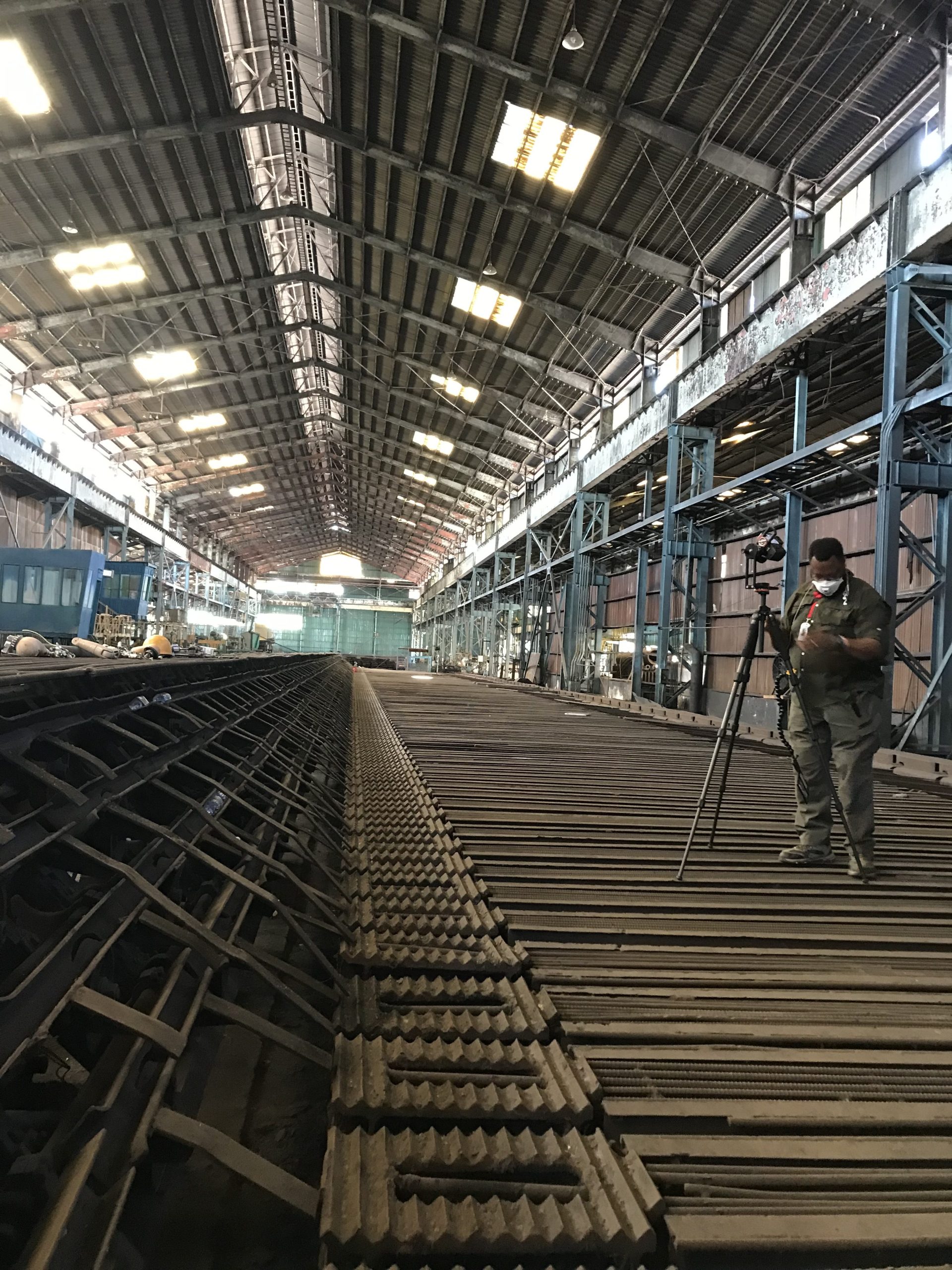
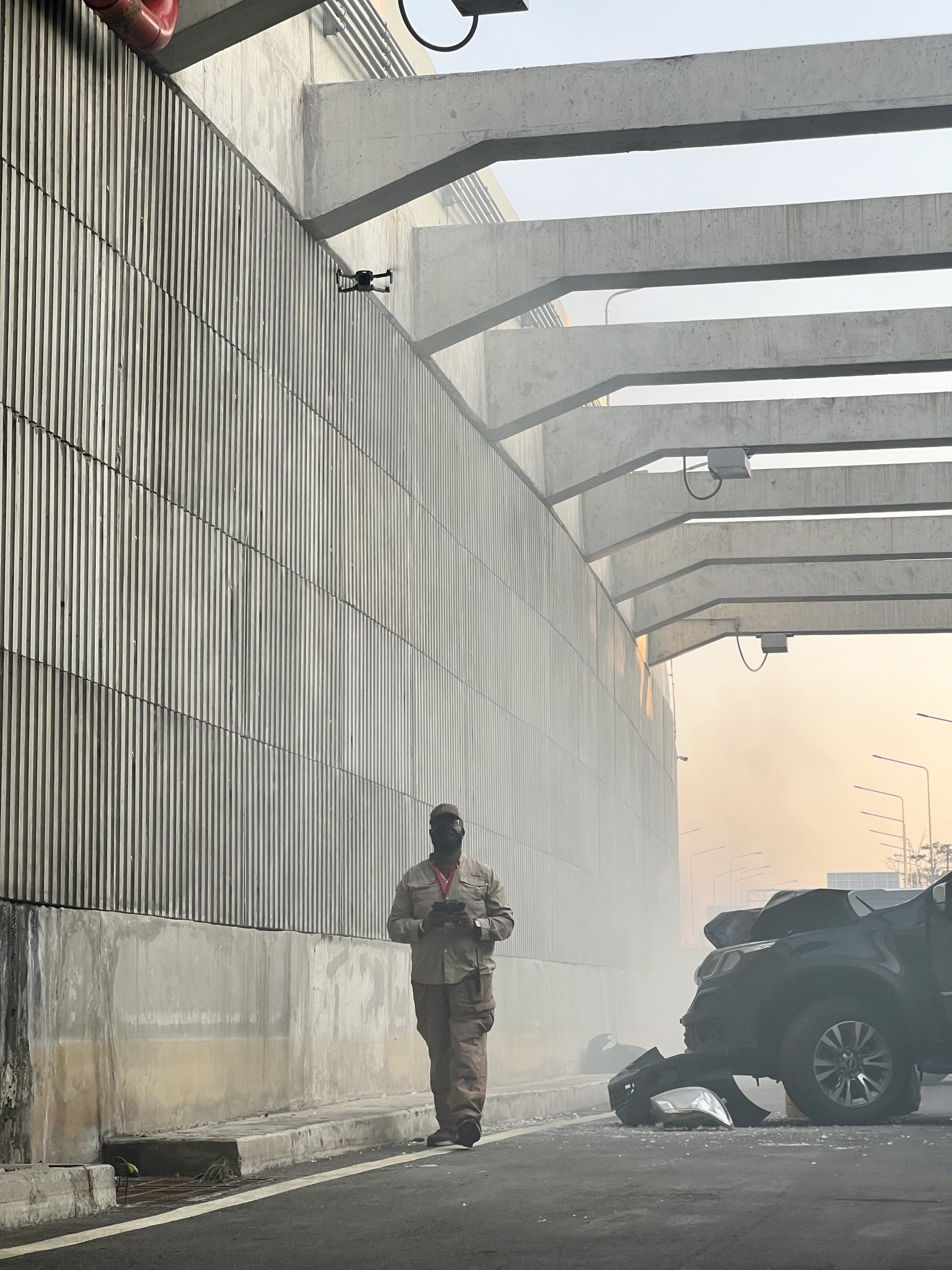
After the main unit wrapped, Roberts collaborated with CG supervisor Adam Watkins in organizing all the reference information and preparing summary documents for the incoming visual effects crew. Before leaving the project, he even had the chance to contribute to a few early shots aboard the NOMAD, pulling on his skills developed in earlier roles as a generalist artist. “We had a version of that set created with Unreal Engine, which Gareth used to plan camera moves and framing,” Roberts notes. “I was able to import that real-time model into 3ds Max, and using gen tools I painted textures and got it into a good starting position. I didn’t finish any shots, but enjoyed working on a couple of those angles.”
Looking back on the experience, Roberts explains that it “really changed me in a number of ways. I was able to observe Gareth, who made the transition from visual effects artist to director, has maintained his love for sci-fi, and creates great works of art. It’s inspirational to get to know someone like that. He’s very down to earth and remains close to the art and craft of visual effects. The experience has improved my confidence in my own abilities. There were areas when I was stretched beyond what I had anticipated, more than anything I’d done before. In the past, I’d expected to have support from a couple of people, but seeing what I was able to do myself, and seeing what beautiful work ILM was able to achieve without the full compliment of resources, will stay with me.
“It’s not ideal, of course,” Roberts continues, “but it is possible to get shots done without all of the information, which is sort of the old school way. It recalibrates what is absolutely necessary for me. It’s also made me look at filmmaking slightly differently. Gareth often said that he didn’t want all of those instruments and accouterments to get in the way of the director and the actors. On other film sets, people might be watching from a video village, the signal goes down and they tell the director to stop. Gareth didn’t want any external factors to interfere with his process, so if the signal stopped, he kept shooting to maintain that pure moment with the actors. He often kept the video village out of sight so that he could rotate 360°. There were times when Oren, myself and a few crew members would be shuffling behind Gareth so he could perform a sweeping 180° camera move.
“It was really refreshing to see this approach,” Roberts concludes. “I’ve opened up my mind to what’s possible. Those ideas of being scrappy and not thinking there’s only one way to do things will keep informing me on future projects.”
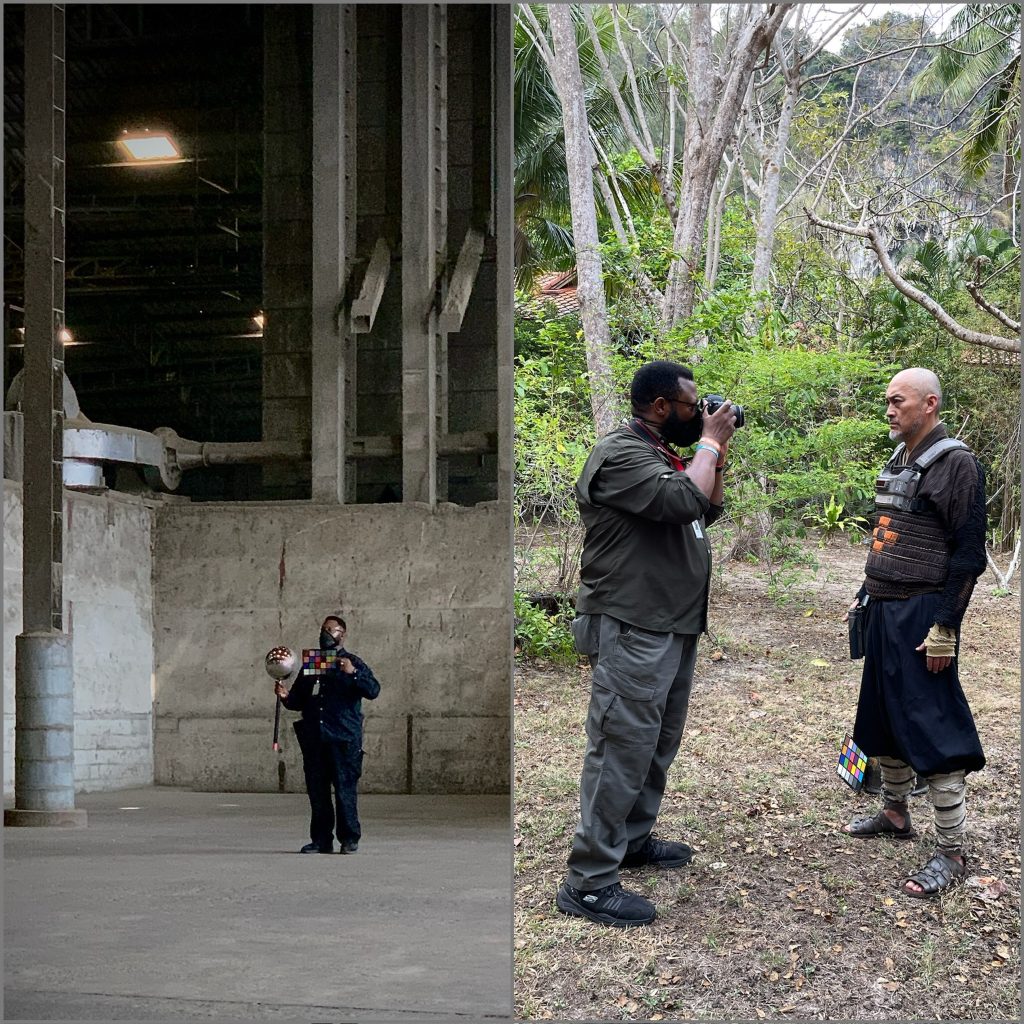
Read more from Roberts and his fellow ILM crew members on The Creator.
—
Lucas O. Seastrom is a writer and historian at Lucasfilm.